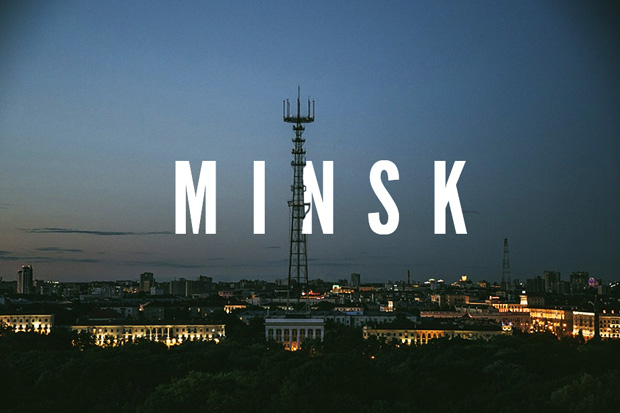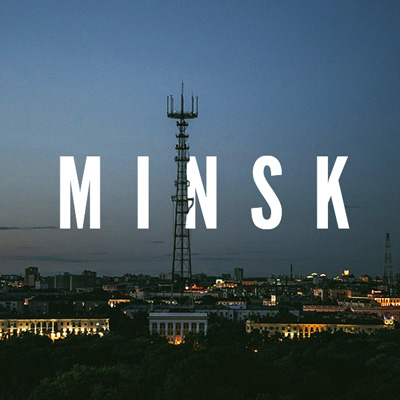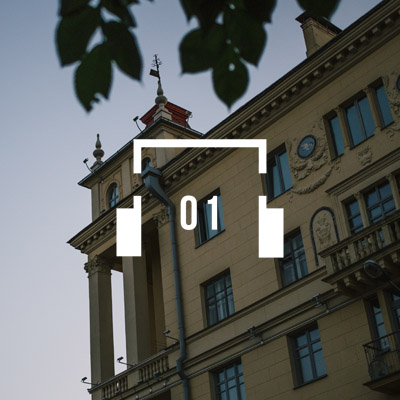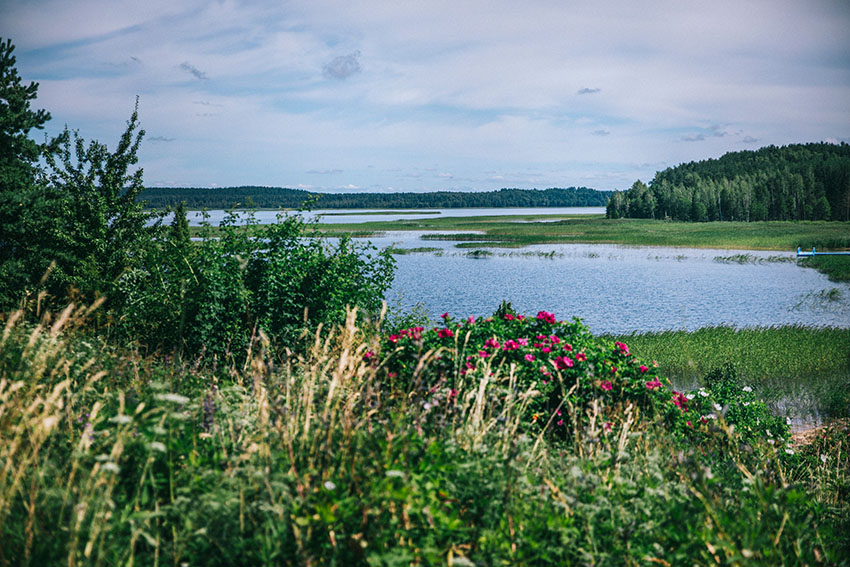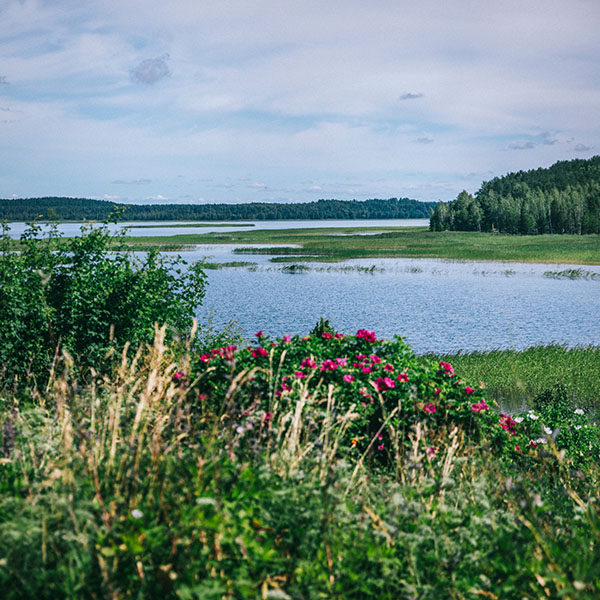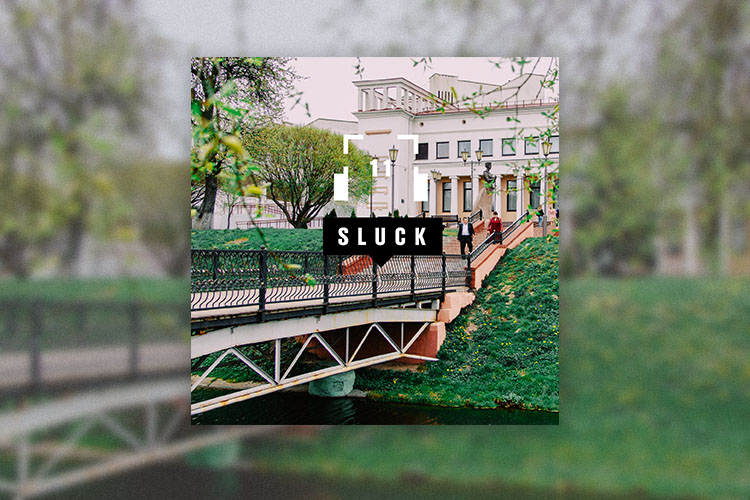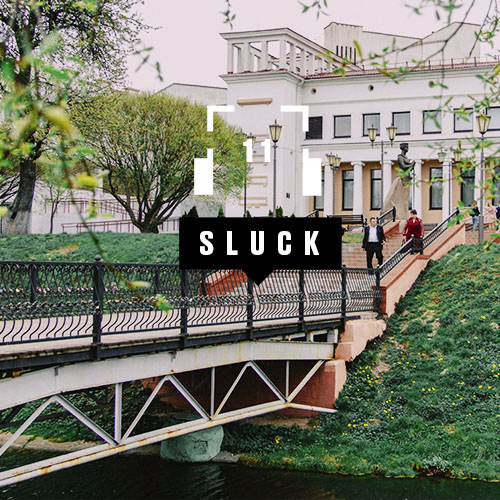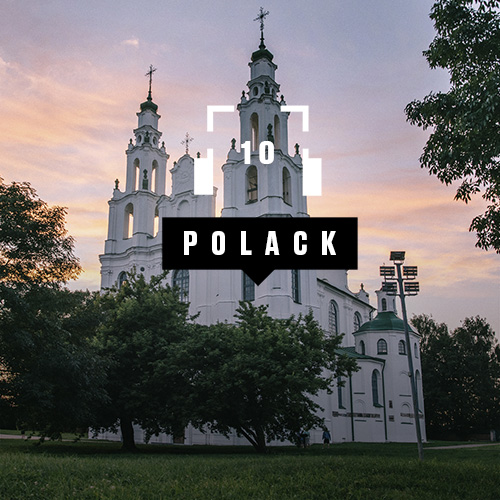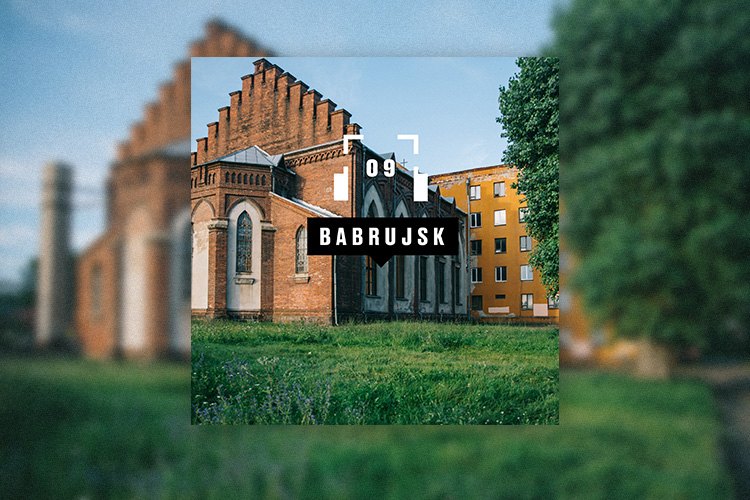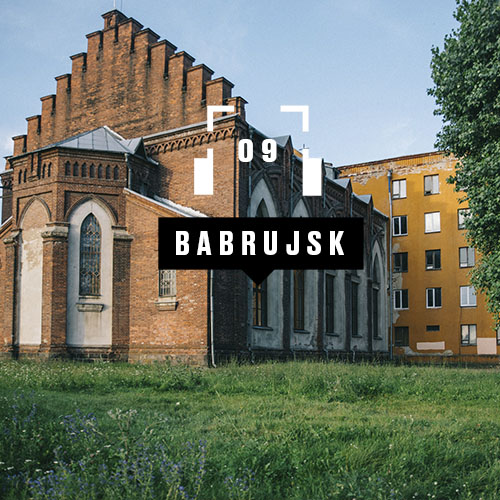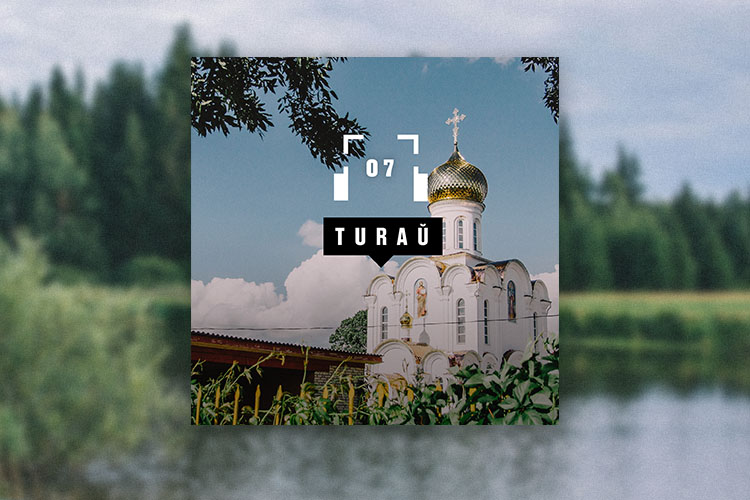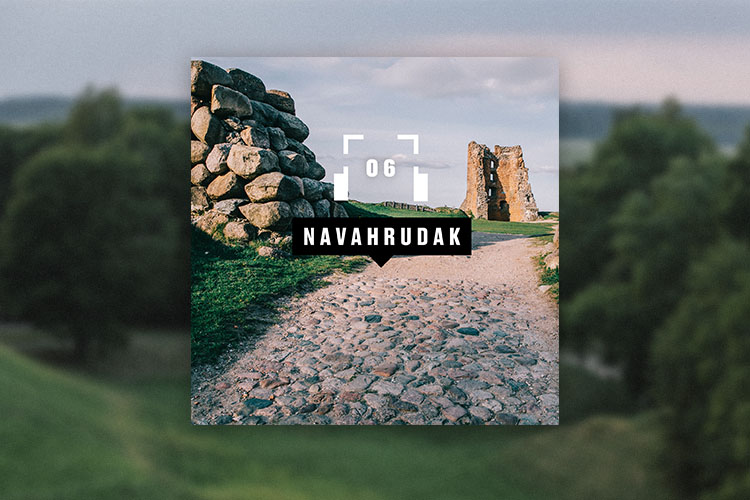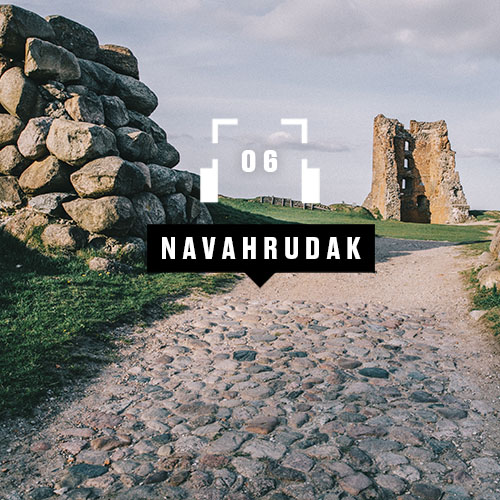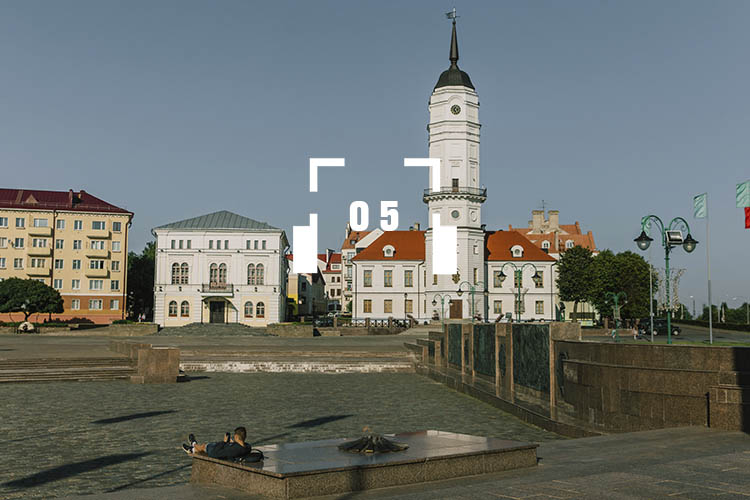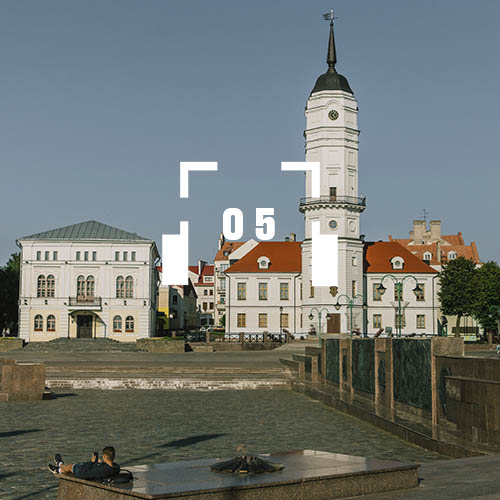34 Landmarks of Minsk
 Our love for Minsk is strong and tender, that’s why together with the guide to Belarus VETLIVA we’ve decided to collect all the key sights of the city in one place. Stalinist and Baroque architecture, classical theatres and creative hubs, historical neighborhoods and impressive modern buildings: let’s explore Minsk from tourist classics to secluded spots for the locals.
Our love for Minsk is strong and tender, that’s why together with the guide to Belarus VETLIVA we’ve decided to collect all the key sights of the city in one place. Stalinist and Baroque architecture, classical theatres and creative hubs, historical neighborhoods and impressive modern buildings: let’s explore Minsk from tourist classics to secluded spots for the locals.
contents:
Religious Buildings Architectural Monuments STREETS & NEIGHBORHOODS
MODERN BUILDINGS MODERN CULTURE & ART Theatres & Museums
Memorials PARKS & NATURE MINSK FOR LOCALS

The Red Church
plošča Niezaležnasci, 15
The Church of St. Simon and Alena, or the Red Church, as Minskers also call it, is located in the very center of the city – at plošča Niezaležnasci. The red brick Neo-Gothic temple really stands out from the surrounding architecture, and it seems to make the church even more majestic and beautiful.
The church was built in Minsk in 1910, and at that time it was the largest and the highest Catholic church in the city. The construction of the church is associated with a sad legend: during the years 1887-1903, Minsk noble Edward Vajnilovič lost two children – Simon and Alena. The son died from scarlet fever, and the daughter suffered from pneumonia. Before she died, the girl saw the image of the Red Church in a dream and drew its sketch. The temple then was erected according to that sketch, and the money for the construction was donated by Vajnilovič himself.
During Soviet times, the building was turned into a theater, then into a film studio. Only in 1990, the Church of St. Simon and Alena was returned to the Catholic community. Since then, the services have been regularly held here. Edward Vajnilovič, the patron of the church and father of Simon and Alena, is buried at the entrance to the church.

The Holy Spirit Cathedral
vulica Kiryla i Miafodzija, 3
The classic postcard view of Minsk. The baroque cathedral literally overlooks the Upper Town, so you will definitely see it, walking around the center.
The Cathedral has a very rich history: at the beginning of the 17th century, there was a Bernardine monastery, but after about a hundred years the building burned down. By 1860 it was rebuilt but as an Orthodox church. A lot happened in the life of the church: for a while, there was a transit prison, an archive, and even a gym.
But today several powerful Orthodox shrines are kept in the church: the icon of the Mother of God of Minsk, which has been constantly in the city since 1500, as well as the relics of Sofia Sluckaja. By the way, you can easily enter the temple and see all the icons yourself.

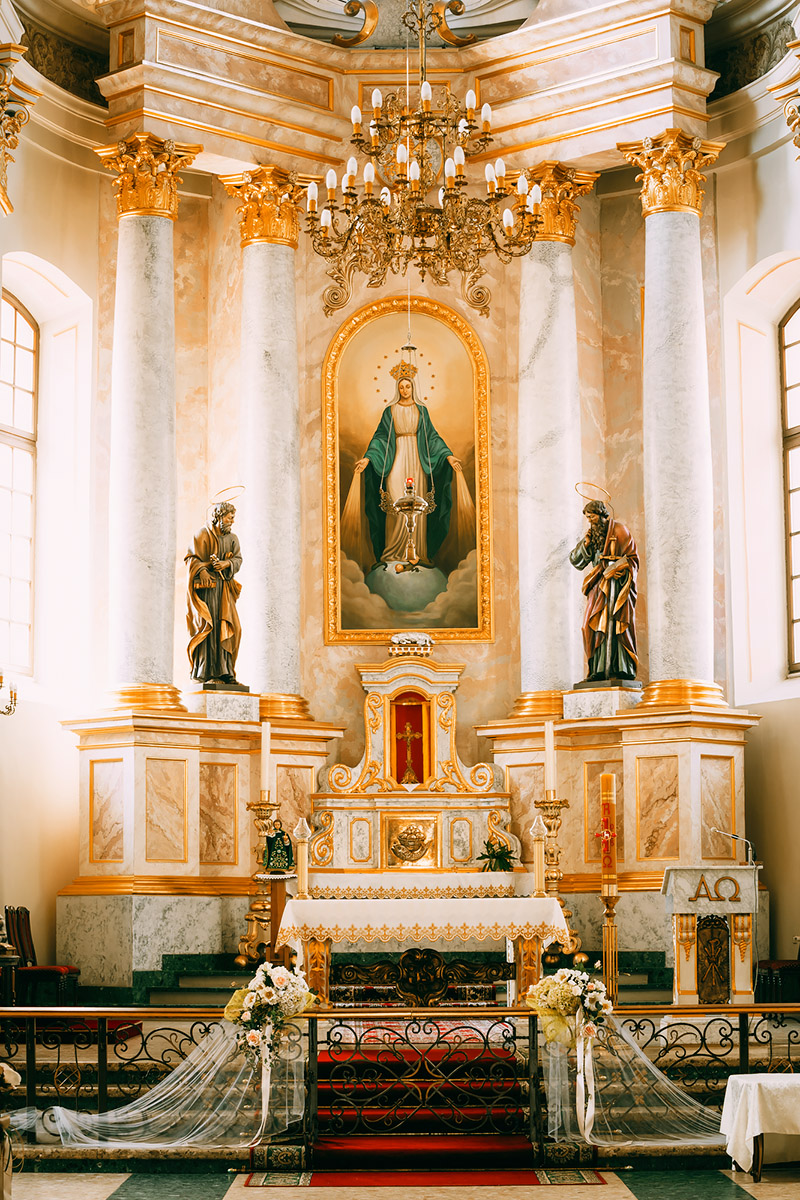
The Cathedral of St. Virgin Mary
plošča Svabody, 9
You can accidentally pass by this temple, although it is located very close to the Holy Spirit Cathedral. The church is squeezed in between two ordinary buildings, and if you don’t turn your head in time, you will miss such a significant architectural monument. By the way, this temple is considered to be the center of Belarusian Catholicism.
The Cathedral of Saint Virgin Mary was built in 1710 as a Jesuit residence, and then it became a cathedral. But the most sudden fact in the cathedral's biography is this: in Soviet times, it was rebuilt into the sports complex "Spartak". And for many years it was difficult to even guess that it used to be a church. In 1993 it was returned to the Catholic community and its original appearance was restored. Pay attention to the openwork facade of the building: niches, pilasters, vases and two tall towers looking up.

The Church of Holy Trinity
praspiekt Niezaležnasci, 44а
You have to deliberately search for this address to find the church because you will hardly come across it while walking through the center of the city – it’s hidden in a quiet residential courtyard. All because of the post-war construction, which surrounded the old-timers of this area from all sides. The neo-gothic church was erected in 1864 (in place of its wooden predecessor). The temple was built in honor of St. Roch, the traditional European defender of the plague. It is interesting that believers of different confessions donated money to the construction of the building (that’s how happy they were that they had escaped the plague). Drop by the church during the service to listen to the sounds of the organ or even get to a real concert by the Minsk Philharmonic. Or just take a walk in a quiet courtyard, where the church is located, to catch a true Minsk zen.

The Church of Aliaksandr Nieŭski
vulica Kazlova, 11
The church in the classical Byzantine style is hiding from tourists in the military cemetery of Minsk. It was built in memory of the Belarusian soldiers who died during the Russian-Turkish war (there is a mass grave behind one of the walls of the temple). The church is perfectly preserved just like it was built in 1898. And even when during the Second World War a bomb flew into the temple through the central dome, nothing happened to the building, because the bomb did not explode. Believers consider it to be a miracle, it is difficult to explain what happened otherwise.
At least two unique artifacts are kept in the church: a wooden field church, which was used during military actions in Turkey, and an icon painted by Nikolai Ge, one of the best Russian artists. And in the cemetery where the temple is located, the most famous classics of Belarusian literature Janka Kupala and Jakub Kolas are buried.

The Church of Peter and Paul
vulica Rakaŭskaja, 4
It is one of the oldest architectural monuments of Minsk and the only Renaissance building in the city. The church was built in 1620, and it almost hasn’t changed since then. When Minsk was swallowed up by the Russian Empire, this church became the main cathedral in the city as it was the only Orthodox church in Minsk at that time. In 1797, the Russian Emperor Paul I visited the service here.
The church lived through two major restorations: the first at the end of the XIX century, and then after about a hundred years – in the 1970s. Unfortunately, the frescoes and many decorative details did not survive all the turbulent events, the mere fact that during Soviet times the building was used as a herring warehouse makes it clear how much the church had to go through.
Today, the Church of Peter and Paul looks like a small portal to the distant past in front of the constructivist Niamiha Trade House and a very long residential building. It makes the architectural value of the temple even more prominent.
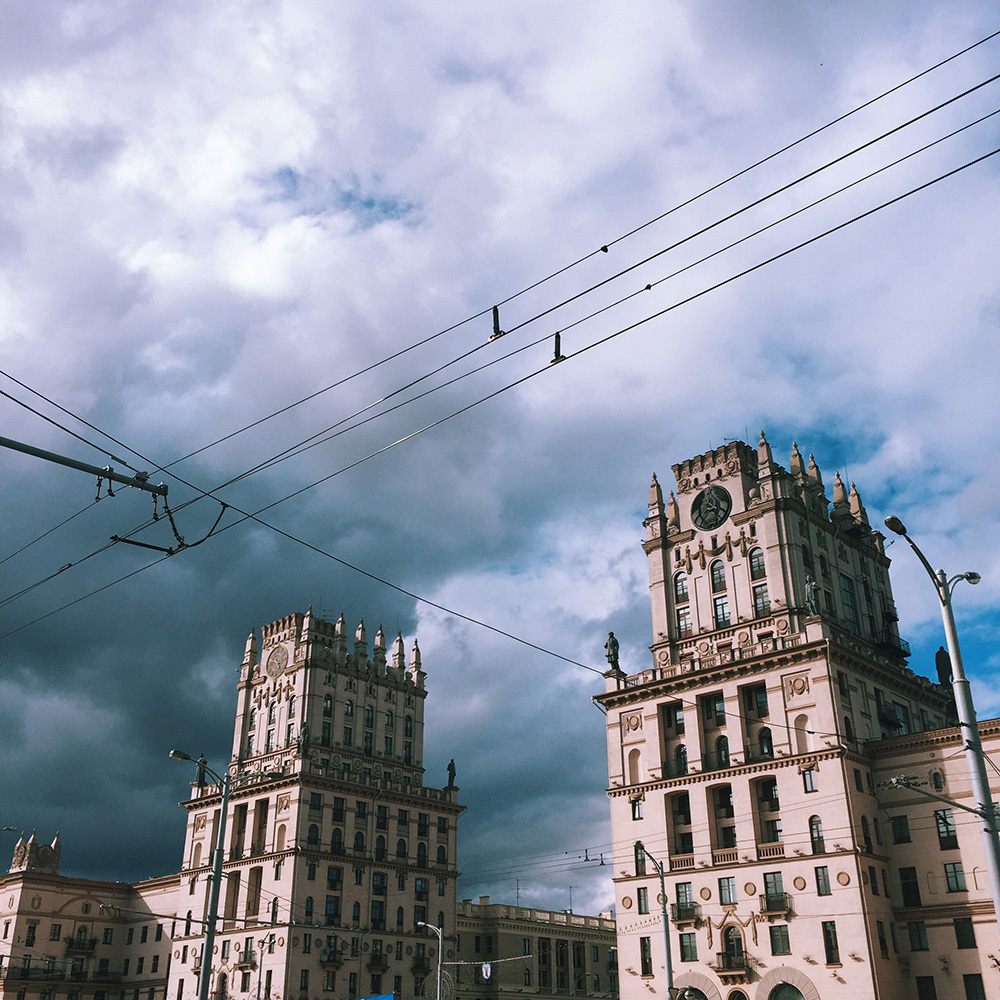
The Gates of Minsk
vulica Kirava, 1-2
If you come to Minsk by train, the first thing you'll see when you come out of the main doors of the railway station are the Gates of Minsk – two tall towers in the Socialist Classicism style. They were built in the early 50s on the site of the old wooden gate, found here during excavations. The emblem of the former Belarusian Socialistic Soviet Republic is still hanging on the right tower, and the captured German clock is on the left one. By the way, this is the biggest clock in Belarus: the diameter of their dial piece is 3.5 meters. Also, the towers are decorated with sculptures of the heroes of the Soviet era: the worker, the farmer, the engineer, and the soldier. We advise you to come to the Gates in the evening: with the illumination they look even more impressive.

“The House under the Spire”
vulica Kamunistyčnaja, 14
The house under the spire is one of five residential buildings of a single complex built after World War II for military families. The spire was made by special order in Moscow, and at its very top a five-pointed star was installed (it is still there today). It is believed that this building was the highest in post-war Minsk - it accounts 43 meters from the ground to the top of the spire. In Soviet times, a well-known food store was located on the ground floor, where one could get some scarce products. Today there is a brand shop of the Kommunarka chocolate factory. Drop by to get some chocolates for souvenirs.

Piščalaŭsky Castle
vulica Valadarskaha, 2
Piščalaŭsky Castle was built in Minsk in 1825 as an urban prison and has always been used as intended. At the same time, the Neo-Gothic style building is one of the historical and cultural values of Belarus, and for the 200 years of its existence, the appearance of the castle has hardly changed. It is said, however, that the castle was built in haste, so it needed to be repaired often. At various times, Vincent Dunin-Marcinkevič, Jakub Kolas, Ales Harun and other figures of Belarusian culture and science served their sentences here. But there are no any excursions here – it is still a prison. However, you can observe the strong towers of this eerie sight in the center of Minsk from afar.


GUM
praspiekt Niezaležnasci, 21
The building of GUM, the main department store in Minsk, is located on the main street of the city – Praspiekt Niezaležnasci. It is included in the architectural ensemble of the City of the Sun. GUM was opened in 1951, and it was the first large department store. It’s built with a post-war utopian scope: a wide staircase, columns, stained glass windows and sculptures of righteous workers of socialism. GUM has always been one of the main attractions of Minsk. You won't feel such a bright nostalgic breath of the Soviet past in any other store: slim rows of men's suits, weighty reels of carpets, straw souvenirs and goods by the best Belarusian producers – it’s the shopping for real connoisseurs!

The City of the Sun
praspiekt Niezaležnasci
The term "City of the Sun" was coined by the Belarusian writer Arthur Klinov to refer to Social Classicist style (also known as the Stalin Empire style). The City of the Sun is Praspiekt Niezaležnasci (Independence Avenue) and some neighboring streets, 8 km long and 2 to 4 km wide all in all. That’s where a vast majority of Minsk sights are located.
After the war, this vibrant and rambling center of Minsk was built up as a single utopian project. The complex of streets, avenues, and buildings was supposed to become an ideal place to live and a city of dreams. The socialist dream was not destined to come true, but the majestic strict buildings became the landmark of Minsk. Plošča Lienina (now Niezaležnasci Square), the Main Post Office, the Gate of Minsk, the Palace of Culture of Trade Unions — all of these buildings, along with the main avenue, appear in a single architectural ensemble and make foreigners wonder how wide and spacious Minsk is.

Traeckaje Suburb
The small island of the “old” Minsk. It is known that already in the 16th century, townspeople and artisans settled on the site of the modern Traeckaje suburb. But in 1809 there was a devastating fire that burned the area to the ground. The new Traeckaje was planned and built under the control of Alexander I himself: landlords, merchants, and other townspeople settled on this 10 streets.
The 20th century gave Traeckaje the hard time (as, in general, to every area of the city), and by 1980 a lot of authentic houses here were destroyed. Around the same time, the suburb began to be slowly restored and rebuilt. Many historians are skeptical about the suburb, they say it has little to do with the ancient architecture. Still, there are many important and valuable buildings in Traeckaje today, for example, the Zitver factory of 1871 or the house of Vidhorčyk, where Janka Kupala lived.
The restored Traeckaje suburb is in the top list of the tourist attractions of Minsk. Here you can wander among the nice houses, look at the museum pharmacy, sit in a cafe or just walk along the Svislač, enjoying one of the best views of the city.
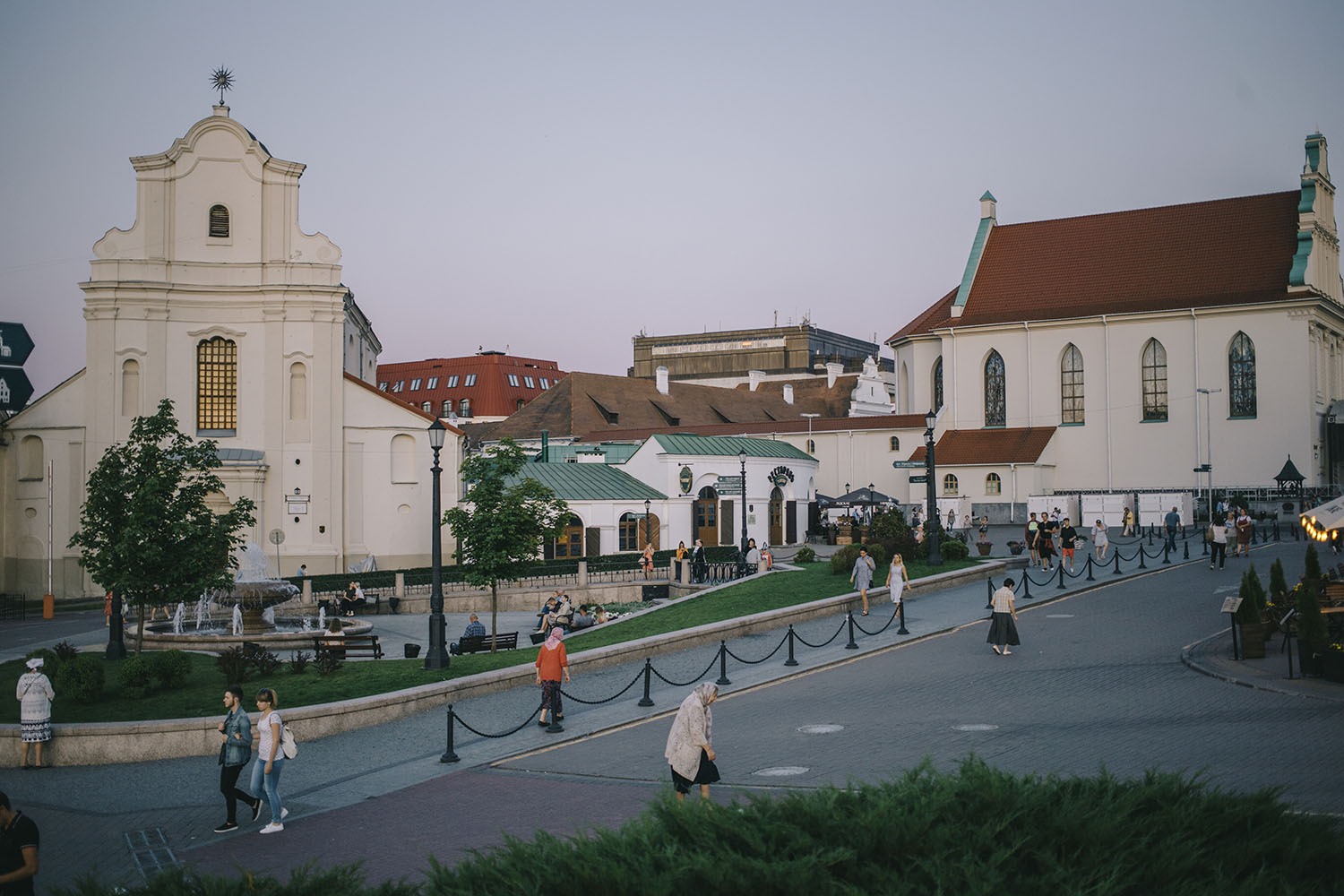
The Upper Town
The historical heart of Minsk, densely filled with authentic buildings of the 16-19th centuries. Here you have the Holy Spirit Cathedral, Plošča Svabody with the Town Hall and the Church of St. Joseph, and several neighboring streets: Revalucyjnaja, Internacyjanalnaja, Hercena and others. The upper town is perhaps the most tourist place in the city, but the locals dearly love it too. In summer, musical festivals are organized here: Jazz and Classical music evenings at the Town Hall, the Forum of the street theaters, the days of the national cultures of Georgia, Sweden, Russia and other countries. In winter, Plošča Svabody turns into a cute Christmas market, where you can buy some souvenirs made in Belarus.
Zybickaya, the party street bulging at the seams with bars and cafes, adjoins the Upper Town. The life here does not stop all year round, and if you want to take part in the vibrant nightlife of the Belarusian capital, you simply cannot find a better place to do it.
.jpg)
Asmaloŭka
vulica Kamunistyčnaja, Bahdanoviča, Kisialiova, Kujbyšava, Čyčeryna
Asmaloŭka is a quiet oasis in the center of Minsk. These two-storey buildings of the 1940s drowning in the greenery has been desperately fighting to exists for the last few years. Asmaloŭka was the very first residential neighborhood of Minsk, built immediately after the war. From time to time, local authorities start talking about the demolition of proud houses in the city center, but residents of the district and activists are fighting for Asmaloŭka with all their capabilities, demanding to claim neighborhood a historical and cultural value.
You can’t find another place in the centre of Minsk that's so quiet and secluded. And walking here is even cooler than walking in the park: there are more than 1300 trees in the area, and many of them are already 70 years old. Asmaloŭka is also a real time machine for those who want to travel to post-war Minsk.

The National Library of Belarus
praspiekt Niezaležnasci, 116
A huge glass rhombicuboctahedron. In order to rebuild the library at the beginning of the 2000s, everyone and their dog chipped in. It turned out quite questionable, but definitely impressive. Come here to climb the observation deck or to go on a guided tour inside the building. And it is better to do it in the evening: at this time the library radiates all sorts of light compositions and looks even more Instagram-worthy.

Minsk-Arena
praspiekt Pieramožcaǔ, 111
If you are told that some cool singer has managed to gather the "arena", it is about the ice arena of this sports complex. The Minsk-Arena consists of a speed skating stadium, a velodrome, and a giant puck-shaped ice arena. The main arena of Belarus can host 15 thousand people! Architects call the Minsk-Arena one of the most successful modern buildings in Minsk. It hosted the main games of the World Hockey Championship in 2014, the Junior Eurovision Song Contest in 2010 and 2018, the Dinamo hockey club plays its home games in the arena, and world stars like Elton John and Jennifer Lopez have their shows here. Well, you can come here just to skate around: public skating in the Minsk-Arena happen almost every day. Be sure to check the schedule in advance.
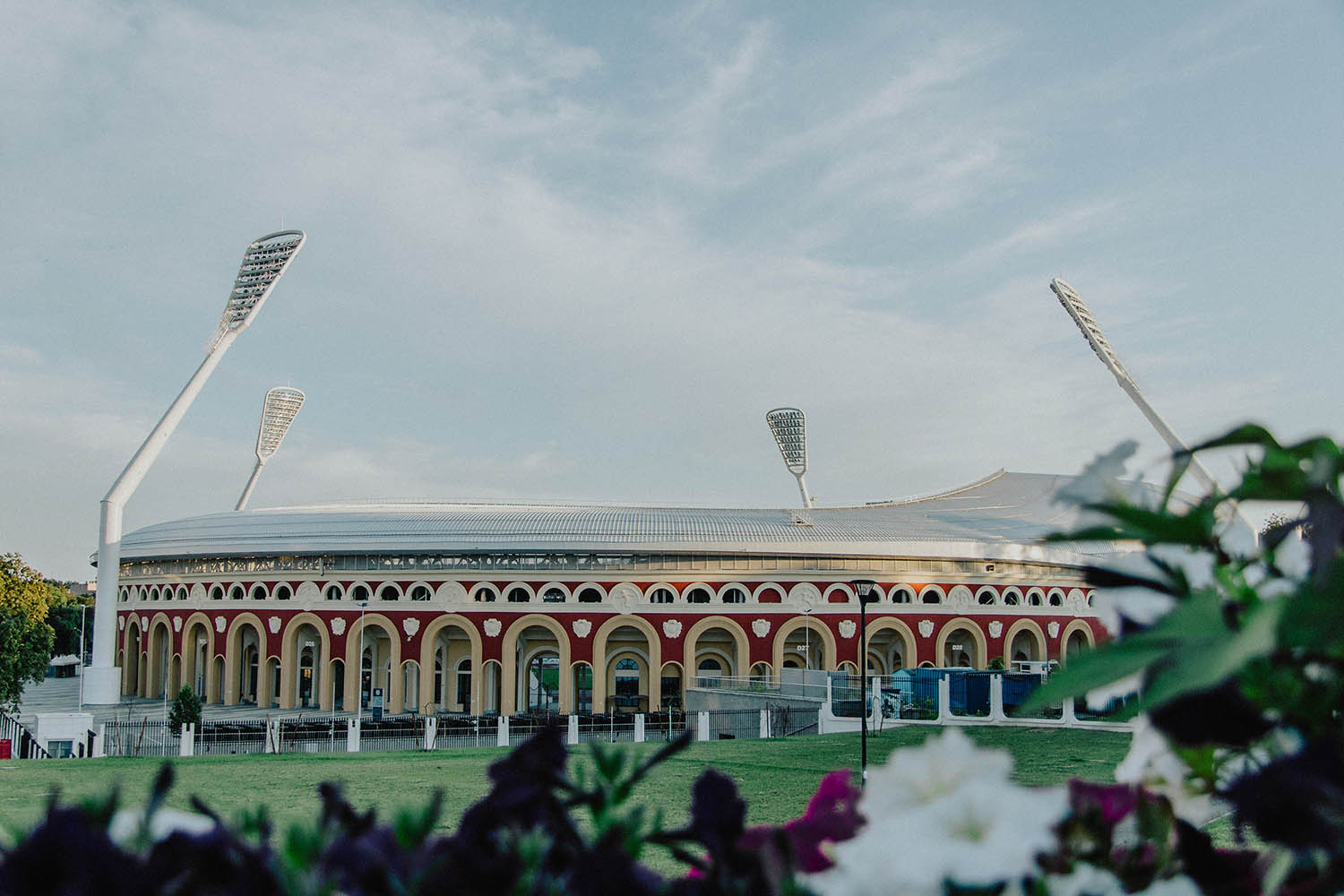
Dynamo Stadium
vulica Kirava, 8
The main Belarusian stadium actually has a long history: the building itself was built immediately after the WWII on the site of the destroyed stadium. But during 2012-2018 there was such a global reconstruction that now the building can easily be called a modern one. A huge stand roof was built, and together with the old original walls, Dynamo began to look pretty eclectic. The huge lights were already tenderly nicknamed "fly swatters". It was right here in August 2018, when Dynamo Minsk had historically defeated Zenit St. Petersburg with a score of 4:0. And in the summer 2019, Max Korzh is going to give a huge concert on the new stadium (we are personally looking forward to this).
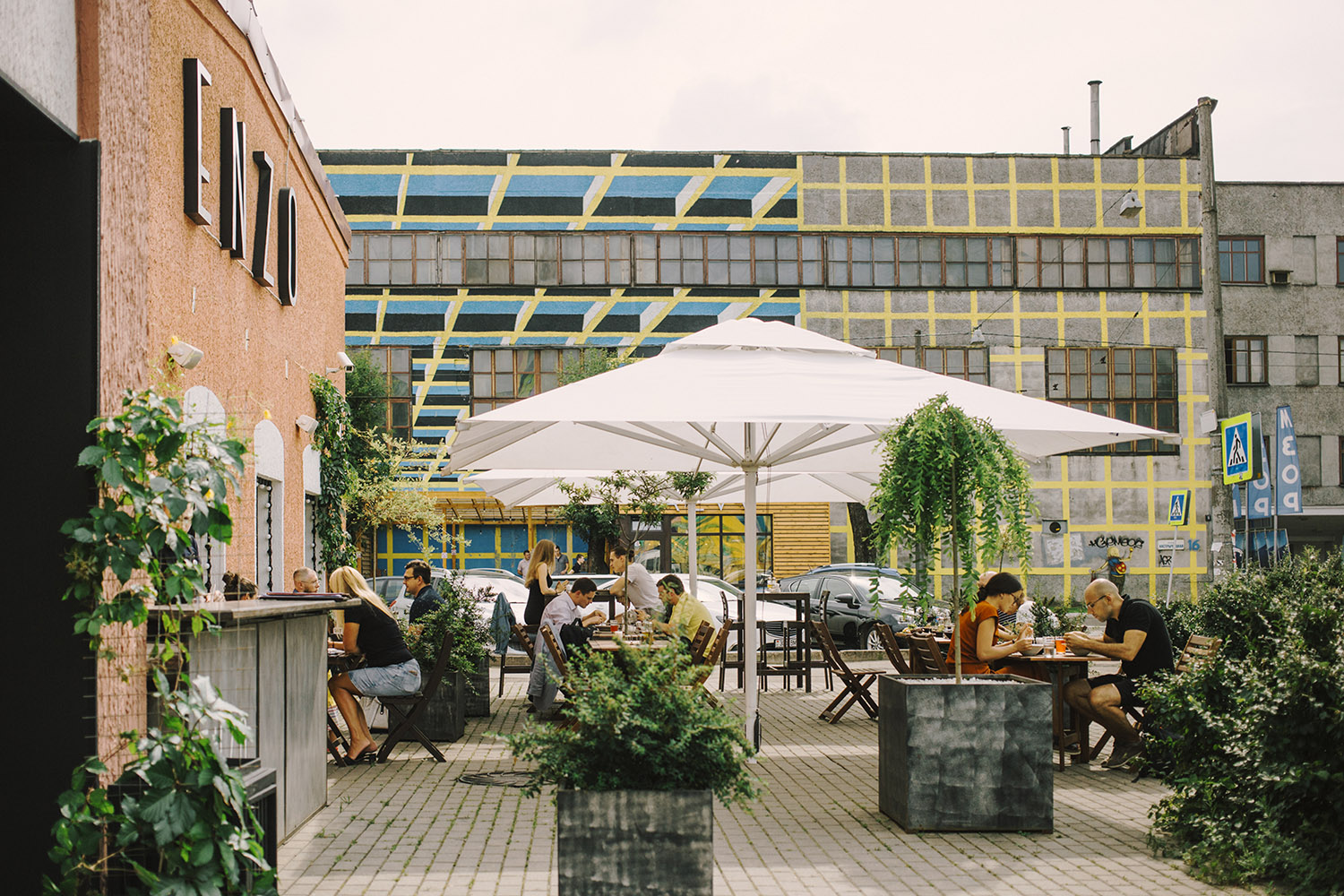
Kastryčnickaja Street and Ў Gallery
vulica Kastryčnickaja
The most vibrant artery of Minsk that in a hundred years has transformed from industrial outskirts into a creative and lively street of the city. At the end of the 19th and the beginning of the 20th century leather, yeast, alcohol and machine-tool factories settled at Kastryčnickaja, and many of them are still operating.
Since 2010, the empty buildings of the street have got filled with the creative class: now cultural hubs, modern art galleries, offices of creative agencies, numerous cafes, and clubs, as well as delicious street food spots have settled at Kastryčnickaja. And the Vulica Brasil festival added a heavy share of coolness to the appearance of the street: now there are more than 20 huge murals and several sculptures and installations here. A real open-air gallery!
Recently, the legendary Ў Gallery of Modern Art moved to Kastryčnickaja as well. They organize exhibitions, lectures and discussions. Moreover, the new Ў Gallery has a very nice courtyard – it’s a must visit.
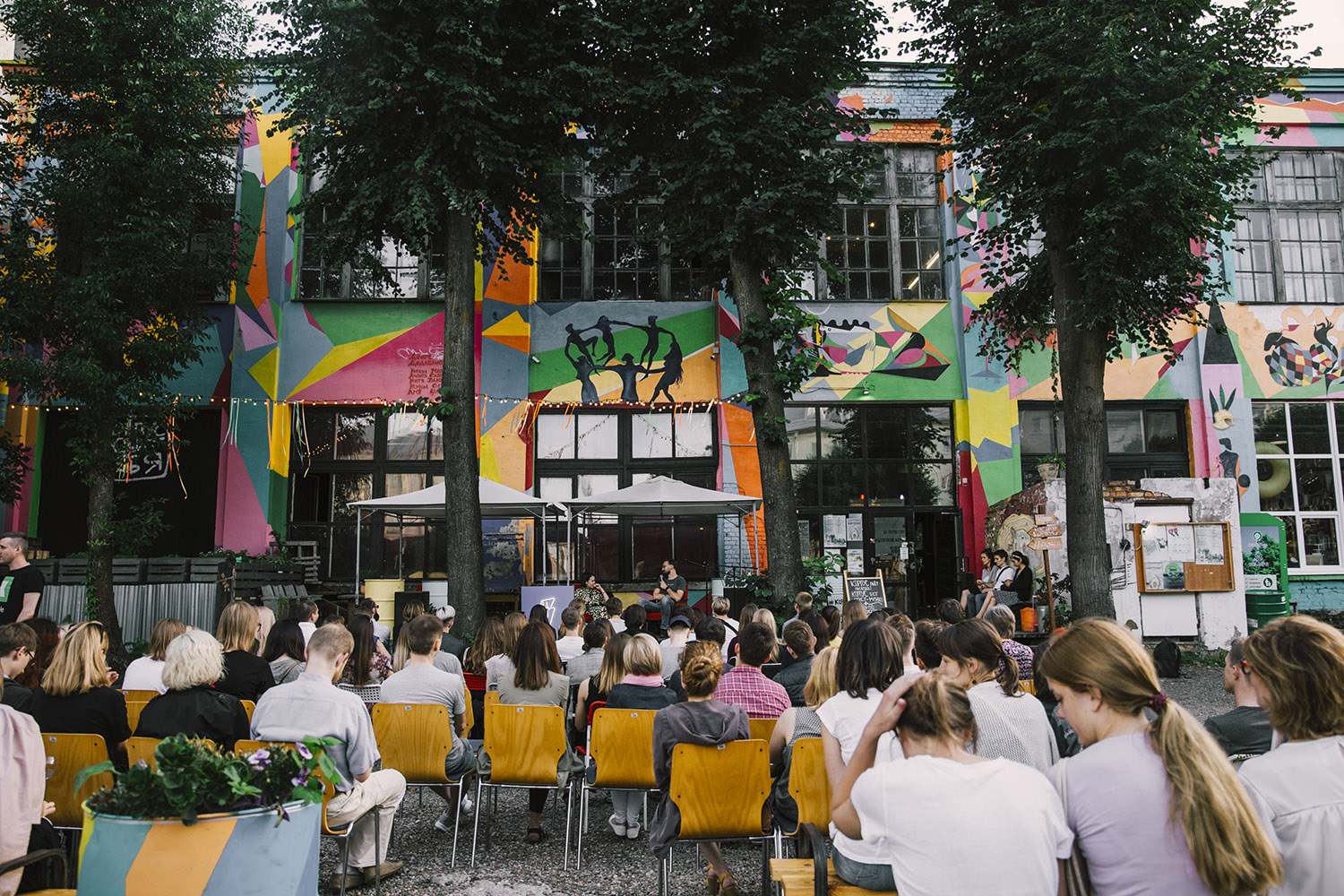
Cultural Center Korpus
praspiekt Mašerava, 9
A former building of the Horizont plant is now an underground cultural center with concerts, lectures, markets, and festivals. The building was empty for a long time until local activists broke in here and started a real revitalization: the guys repaired the building so that the brand-new Korpus became an important spot for urban culture lovers. Korpus organizes lectures, movie screenings, concerts, and parties, you can follow all these events here.
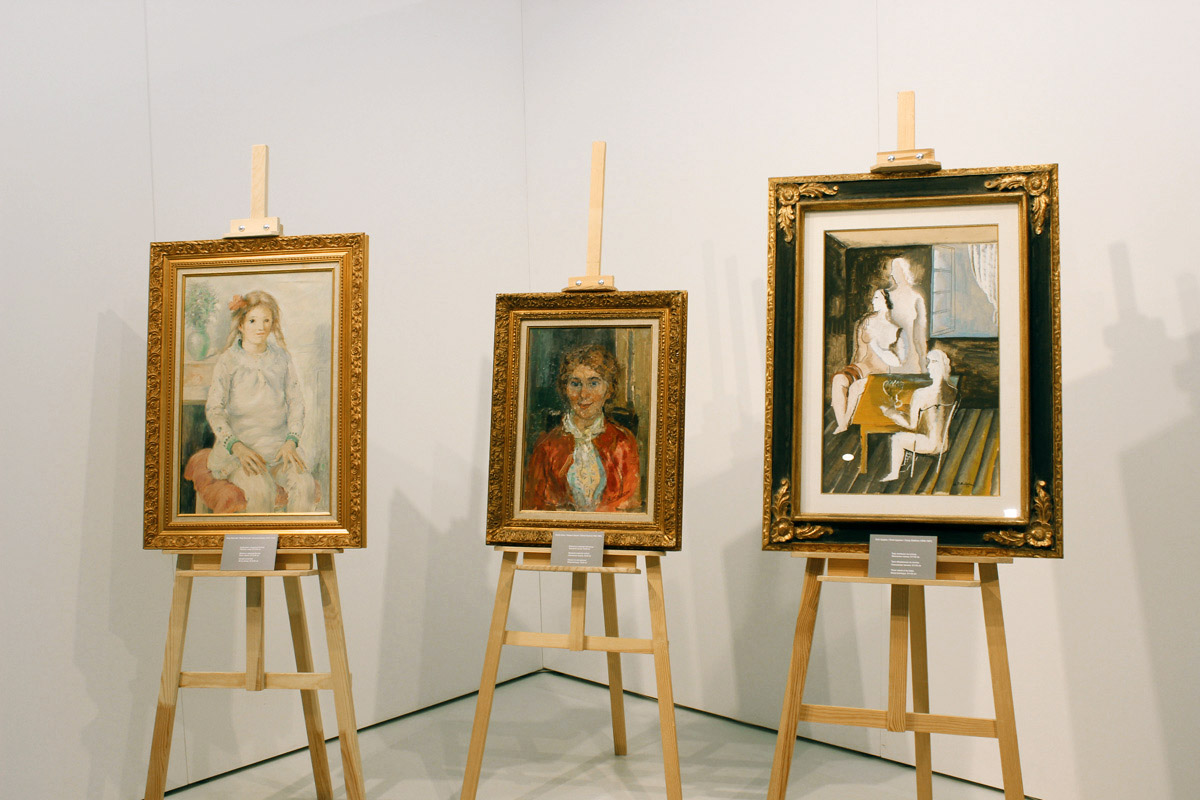
Art-Belarus Gallery
vulica Kazlova, 3
Originally, this gallery was a closed corporate collection of Belgazprombank, but now thanks to the bank and the Ministry of Culture of Belarus, everyone can see the paintings. And the collection itself is great: Chagall, Soutine, Zadkine, and other representatives of the Paris School (and many others). In the Art-Belarus Gallery you can also see a valuable “Small Roadside Book” by Francysk Skaryna published in 1522 in Vilnius. It is actually the first printed book in the Great Duchy of Lithuania!
.jpg)
The Opera & Ballet Theatre
plošča Paružskaj Kamuny, 1
The Opera & Ballet Theatre (also called The Bolshoi Theatre of Belarus) has been constructed prior to the inception of the WWII – in 1938. However, at the beginning of hostilities, the bomb hit the theatre and damaged it heavily. The building was repaired in 1947 and fully reconstructed in 2000. Nowadays, judging by the majestic constructivist look of the theatre, which sometimes resembles a huge spaceship, one wouldn’t tell the hardships of its destiny. It’s quite a puzzle to get the tickets for the show at The Opera & Ballet Theatre, so if you’re willing to hear classic opera or see the ballet mind getting them well in advance. If you’re not into classic arts, take a moment to enjoy a walk in a secluded and quiet part around the theatre.
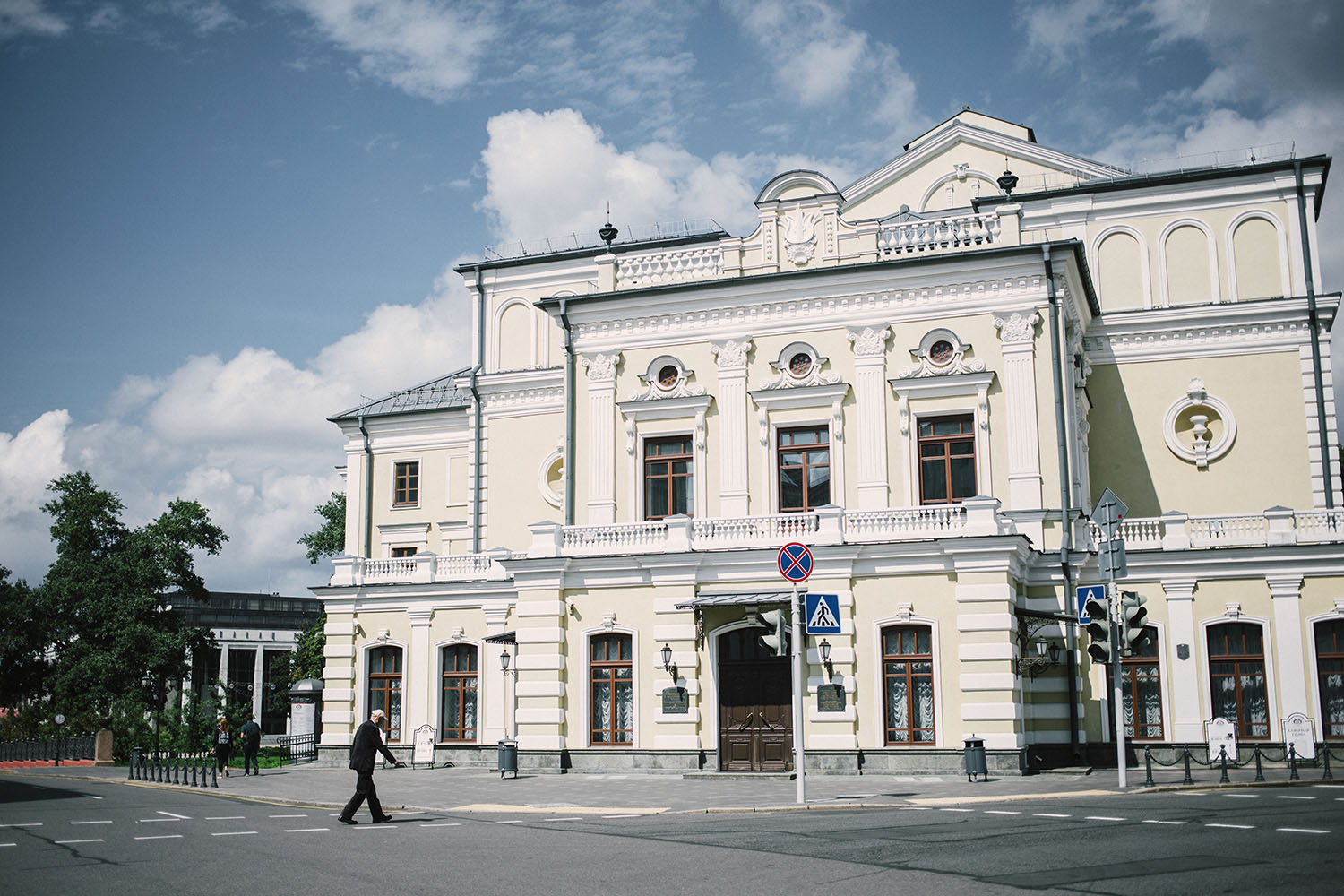
Janka Kupala Theatre
vulica Enhelsa, 7
The oldest theatre of Minsk has opened its doors to the public in 1890. At a time it was equipped with the most advanced technologies and citizens have been thinking of it as of the most beautiful and elegant building of the city. In 1917 the theatre has housed the premiere of “Paŭlinka” – the show based on the play by famous Belarusian writer Janka Kupala. The show is still a trademark of the theatre, each season opens up with it (and the theatre itself is often referred to as Kupalaŭski, due to its dedication to this author). However, we’d recommend to see the contemporary shows – “Art” and “Radziva Prudok” to name a few. All shows are staged in Belarusian, of course.

Horkaha Theatre
vulica Valadarskaha, 5
The story of this building at Valadarskaha str. 5 is hardly carefree. It begins in 1906 when the Minsk Choral Synagogue was erected at this site. It has been built in a fashionable manner - mimicking the look of Mauritanian style of The Budapest's synagogue. Right until 1921 the synagogue at Valadarskaha remained the central one. But since 1923 its adventures have commenced. The building became a home for the Soviet workers' club, later it has been hosting a cinema. In 1930-s Jewish theatre occupied the place. After the WWII the building was dramatically rebuilt in the classicistic manner bearing nothing in common with what it has been before. Just a tiny part of the exterior on its sides have preserved the old Mauritanian style. After the reconstruction the theatre has reopened as the Russian theatre, presenting the repertoire of Russian and foreign classic pieces.

The National Arts Museum
vulica Lienina, 20
The most impressive collection of visual arts in Belarus is expecting the visitors of The National Arts Museum. Here one will find collections of masterpieces from East and West, as well as the vast collection of Russian paintings, social realism pieces, and, of course, works of Belarusian artists. Periodically, the museum brings in the exhibitions of world-famous artists. Works of impressionists, artists of Belarusian descent belonging to the School of Paris, and some of Leonardo da Vichy's inventions have visited the museum. Recently, The National Arts Museum has hosted the exhibition of Israel Basov, gathering the collection of his best works under the same roof for the first time ever. Thanks to the efforts of the young and ambitious team of the museum's curators the place can offer the array of authors' excursions, interactive programmes, and activities tailored for kids. A nice café offering snacks and coffee comes as a bonus to this museum.
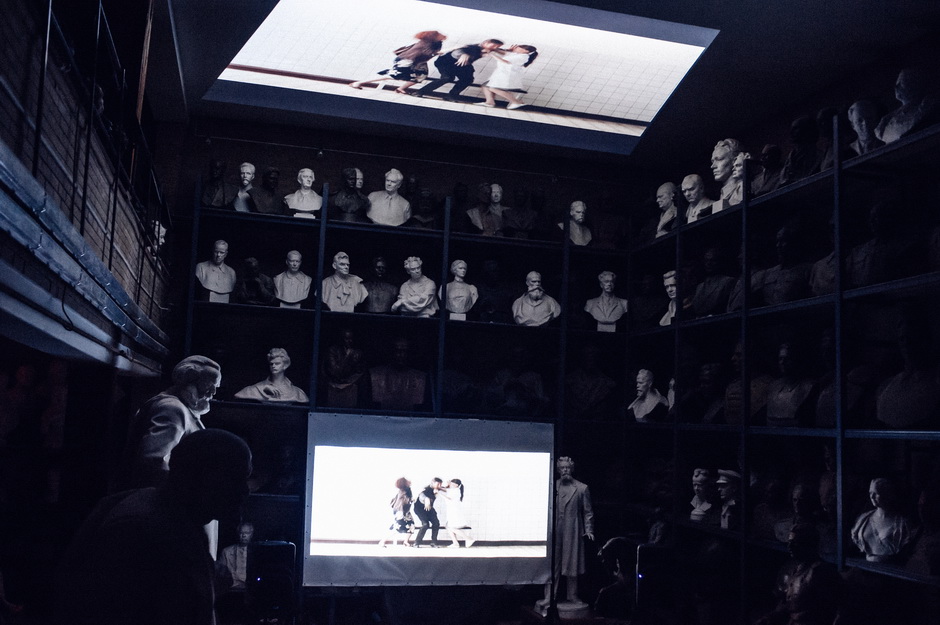
Azhur Museum and Studio
vulica Azhura, 8
A former studio of the most famous Belarusian sculptor has been turned into a museum. It is a perfect place to get a heavy portion of the Soviet vibe.There are 425 sculptures of heroic soldiers, writers and communist leaders. You can hardly find a place in Belarus where the number of Lenins and Stalins per square meter would be so high. The atmosphere of Azhur Studio is pretty intense and cinematic: some scenes of the much talked-of movie “Cristal” by belarusian director Daria Zhuk have been shot right here.
Lots of events and lectures are often held in the museum, check out the schedule here.

Jama Memorial Complex
vulica Melnikajte / vulica Zaslaŭskaja
The complex was created to commemorate the victims of the Holocaust, the worst tragedy in the history of the Jewish people. In 1942, 5,000 prisoners of the Minsk Jewish ghetto, including children, were killed at Jama (“The Hollow”). The very first memorial sign was installed here in 1947, and it was the only memorial in the USSR with an inscription in Yiddish. A modern monument to the victims of the Holocaust was erected here in 2000: 27 exhausted people are descending 17 steps down to meet death. Another part of the complex is the Alley of the Righteous among the Nations, where trees are planted in memory of people who risked their lives to save Jews during the war. Come here to just keep silent in memory of the innocent people who died.
.jpg)
Plošča Pieramohi
plošča Pieramohi
The very square featured as a must-see for every British journalist's field trip to Minsk. A huge Victory monument in the center of the oval square, Eternal Fire and the inscription "The feat of the people is immortal" are attracting tourists with its power and silent grandeur. The 38-meter monument was erected in 1954 as a memorial to every victim of the WWII. Part of the complex is hidden underground in the halls of Plošča Pieramohi subway station. The tables with names of 566 Heroes of USSR are installed there. In the middle of the composition lies a big glass wreath lighted from underneath and mirroring the Eternal Fire on the ground level. It's worth seeing the Monument to have a glance at the strict and a little gloomy Minsk and then move forward to find out that this is not the only face of the city.

Park Pieramohi
A huge 200-hectare park where you can rent a bike and ride along a long bike path, admire the fountain in the center of Kamsamolskaje Lake or have a picnic in the shade of the trees. The most interesting and secluded place in the park is the Bird Island, a huge number of different species of birds live there. All the paths, stairs and benches on the island are made of wood, so it’s a true small ecosystem with pristine nature.

The Botanical Garden
vulica Surhanava, 2в
The Botanical Garden is the perfect place for flora lovers: there are thuis, lindens, maples, birches, oaks, many species of lilac, arboretum, tropical greenhouse, house, and medical plants. Here you can wander alone or visit a guided tour. We also like the second option, because the garden is a real monument of landscape architecture with many rare and ancient plants, so it’s interesting to walk around here listening to the stories of the park's scientists. In summer 2018, the Stereo Weekend music festival was held here for the first time, and we hope that this will become a good tradition.

Lošycki Park
Lošycki Park is a large manor complex of the 18th century with a noble residence in the Russian modern style and huge alleys of trees. The manor itself has been preserved quite well and today it is a museum. And the pearl of the manor-park complex is an old chapel in the style of Vilna baroque, built at the beginning of the 18th century. At that time, there was no catholic church in the area, so the chapel was built for the catholic believers to pray. At the beginning of the 20th century, the building was blown up, but it survived and still hides from Minskers in the densest part of Lošycki park. By the way, in summer there are a lot of music events and holidays in the park, check out the schedule.

Kamaroŭka Market & “The Kebab Mile”
vulica Viery Charužaj, 8
Tourist classics is all fine, but there are spots in any city that would let you feel the true local vibe. Main city market is one of those spots – and in Minsk it’s Kamaroŭka. Fresh cheeses and milk, vegetables from the garden, meat delicacies – here you’ll get a full immersion into the wonderful world of Belarusian trade. By the way, a particular highlight of the market and the surrounding area is the “kebab mile”, which stretches along Kulman Street and goes further into the market rows. It’s a place to try the legends of local street food: shawarma from Mirage Cafe and pho from Saigon-Viet. Don’t worry, we’ve tried it all ourselves.

Centralny Bar
praspiekt Niezaležnasci, 23
Another spot for the locals, where you can meet pretty much anybody: poor students, respected professors, cultural bohemians, elderly punks and kind-hearted drinkers. Centralny sells cheap alcohol on tap, classic sandwiches for snacks and pastries from our childhood. The panoramic windows of the buffet offer a great view of Praspiekt Niezaležnasci. Pay attention to the cool bas-reliefs on the walls: these are real masterpieces of Soviet art.
.jpg)
Minsk Metro
The only subway in Belarus was opened in 1984, back then it was just one line from Instytut Kultury to Maskoŭskaja. The design of many of the very first Minsk metro stations is saturated with the spirit of the Soviet past: e.g., you can see inscriptions with communist slogans on the walls at Kastryčnickaja station and an impressive bust of the leader of the October Revolution at Plošča Lienina. Piatroŭščyna stands out among the modern stations: the ceiling there looks like a night starry sky.
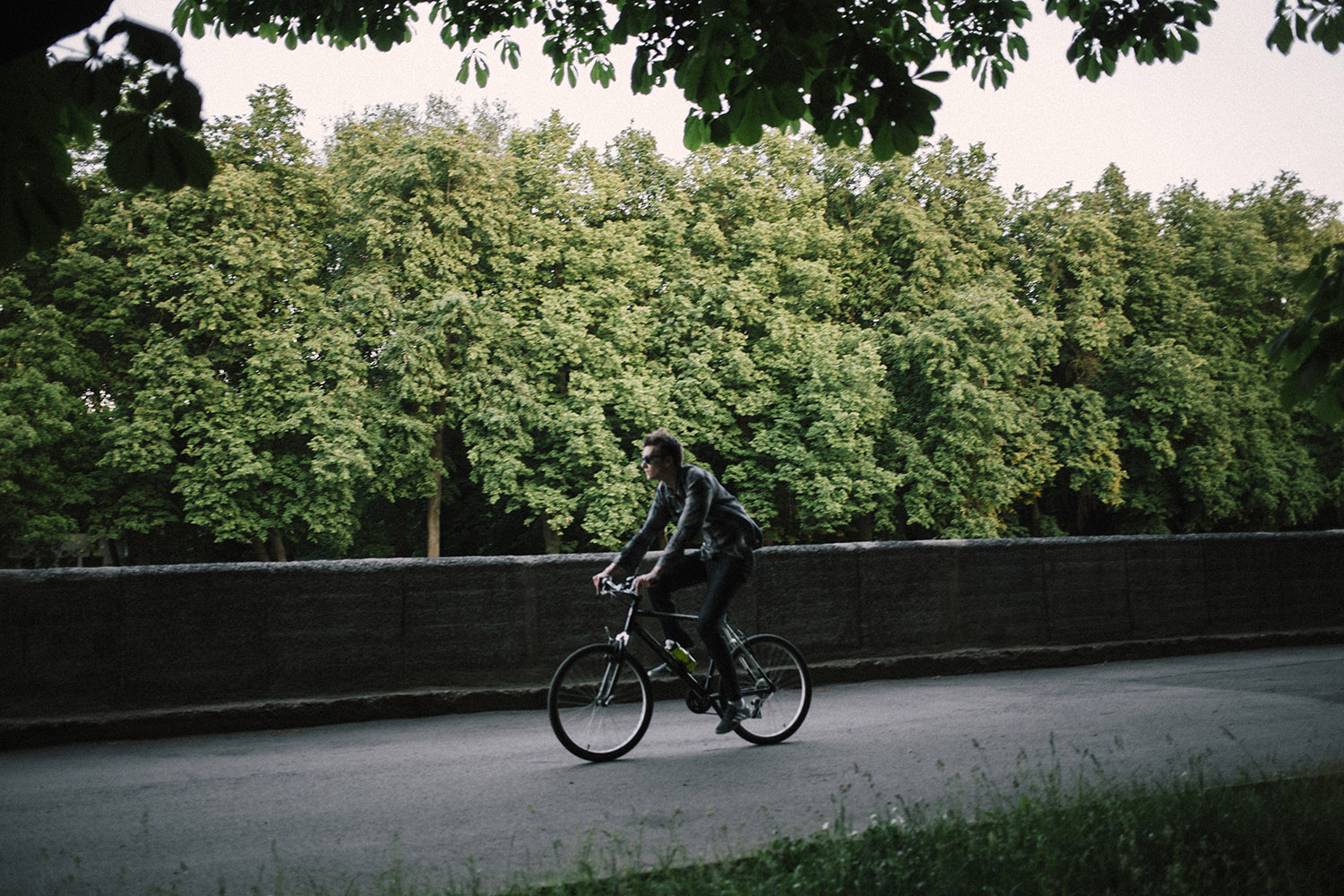
Minsk Bicycle Path
The main Minsk bike path extends from the northwest (Drazdy water reservoir) to the southern outskirts of Minsk (Chyžoŭskaje water reservoir). The track is about 26 km long. If you don’t have a bicycle of your own, it’s fine, because there are enough bike rental points along the route You can rent a bike in Lošycki Park, Park Pieramohi, near the Minsk-Arena, in Janka Kupala Park and in other points of the city. Driving the entire route from start to finish is likely to take you all day, but you will see the whole Minsk as it is.
VETLIVA – is a guide to Belarus where all the sights, tours, health camps, and farmhouse guest rooms are collected. You can book a tour right on the website. Sincerely recommended!
![]()
Photos by palasatka, murmurash, Tanya Kapitonova, Belhot.by, belarusgid.by, La Dent de L'Oeil, depositphotos.com, POGUE.BY, juliesecret, Планета Беларусь,
ООО «Концептуальная реклама»
УНП 490499796

